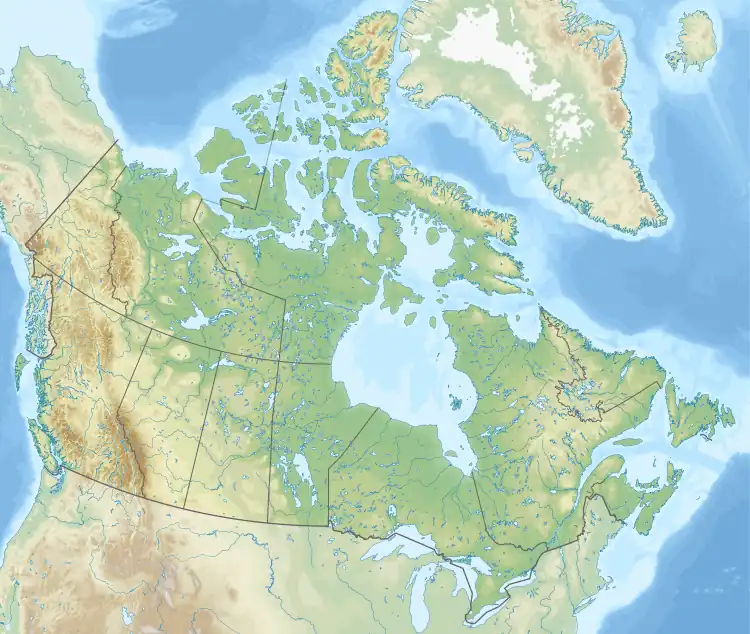 location in Canada | |
| Location | near the White River First Nation community, Beaver Creek |
|---|---|
| Region | Yukon, Canada |
| Coordinates | 62°30′51″N 140°55′29″W / 62.51417°N 140.92472°W |
| History | |
| Founded | 14,050-13,720 BP |
| Site notes | |
| Archaeologists | Norman Alexander Easton |
Little John is an archaeological site in Yukon, Canada, located 25 km (16 mi) northwest of the White River First Nation community of Beaver Creek, from which human artefacts and ancient animal bones have been radiocarbon dated to 14,000 years before present (BP), earlier than the generally accepted time for human migration into the Americas and one of the oldest sites in Beringia.[1]
Context
The Little John site lies at the edge of the Mirror Creek glacial advance (central Yukon's Reid, or North American Illinoian glacial events).[2]
Dating
The site was excavated by anthropologist Norman Alexander Easton between 2002 and 2017. Radiocarbon dating of one of the human butchered bison bones indicates that the site is between 13,720 and 14,050 years old.[3]
See also
References
- ↑ Chris, Oke (3 April 2008). "Nine year old Yukoner makes archeological breakthrough". Yukon News. Retrieved 17 July 2017.
- ↑ Easton, Norman, Alexander (June 2012). "Archaeological excavations at the Little John site (KdVo-6) Soutlhwest Yukon Territory, Canada - 2011" (PDF). Northern Research Institute.
{{cite journal}}: CS1 maint: multiple names: authors list (link) - ↑ "Nine year old Yukoner makes archeological breakthrough". 3 April 2008.
This article is issued from Wikipedia. The text is licensed under Creative Commons - Attribution - Sharealike. Additional terms may apply for the media files.